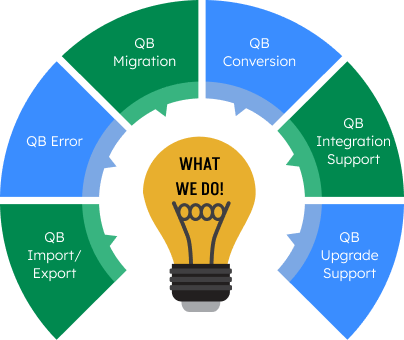In QuickBooks, there are available crystal reports to create custom reports from several data sources. You can easily use it to monitor the information. The CData ODBC driver is required to access the crystal report.
Table of Contents
What are the Crystal Reports?
Crystal reports are known as intelligent applications users used to generate custom reports from different data sources. It contains the significant features required for a business to generate a database reporting environment like report design, application integration, report formatting, and data access, etc.
Get Expert Advice to Fix All Accounting & Bookkeeping Problems

How to Create Crystal Report with QuickBooks Desktop
- First of all, launch your QuickBooks software.
- Then start creating the report either by the manual method or by the New Report Wizard.
- Next, you need to click on the Create New Connection folder node so as to expand it.
- After that click on the plus symbol to open the ODBC (RDO) window.
- Now choose the QuickBooksData.dsn option and tap on the Next button.
- Further tap on the finish button at the bottom of the window.
- Then you can see that the selection for the QuickBooks table is visible on the screen.
- Now you have to choose the different or suitable tables for making your report.
- Next, go through the data layout and associate the tables.
- After following this process you will see the fields of the table are accessible and ready for selection.
- At last, you need to click on the Run Report button so as to create a report.
Note: Now another most important thing that you need to download and configure is the QODBC as without the database connection you won’t be able to fetch and save any data.
How to Configure QODBC driver for Crystal Reports?
To configure the ODBC driver follow the instructions step-wise and make sure you do not skip any of the steps, otherwise, it can create some sort of issues while the configuration and the connection with the QuickBooks data.
- First of all, you need to launch your QuickBooks Desktop software.
- Then go to the menu bar and select the File menu.
- Next, choose the Utilities tab and click on the setup ODBC option.
- After that tap on the General tab and select the option named “Use the Company file that’s now open in QuickBooks”.
- Further, go to the data source name field and type in QuickBooks Data there.
- And then you need to search for the Test connection button and tap on it so as to check if the connection has been acquired or not.
- Note: If you want to run your test connection successfully, then make sure that you have logged in as the administrator in the QuickBooks software.
- Now if there is a successful connection and you receive a message saying test connection successful then you need to tap on the OK button and choose the Apply option.
- Then go to the messages section and tap on it, if you find that the detail tracing checkbox is checked then uncheck it.
- Next check the checkbox named Display Optimizer Status Panel.
- Further tap on the Apply button.
- Now go to the Optimizer section and tap on it select the Use Optimizer checkbox
- Make sure the default and favorable Optimizer file path are set as (%AppData%\QODBC Driver for QuickBooks\Optimizer).
- Next, select the start button of each query and tap on the OK button for exiting the setup of the ODBC Driver.
You may read this: How to View, and Record Invoice Payment History Report in QuickBooks
QuickBooks Crystal Reports: Reverse Engineer Your Database
QuickBooks Crystal reports are a new trend in projects these days. For more understanding of QuickBooks data from crystal reports, you have to introduce a special ODBC driver called QODBC. QODBC is basically an exceptional driver in which when the queries are entered within the QB tables then it displays a small counter panel for each table.
It showcases the records returned from that table. Suppose the report is composed of six tables, and you can view the pile of small windows crop up, open, and close as QODBC assembles your data set.
How to Create a Report with QuickBooks Data?
Intuit recommend steps to create a new report via wizard or manual methods.
They are as follows:
- Expand the folder called ‘Create New Connection’.
- Next, expand another folder called OBDC (RDO) to open a new window.
- Under this new screen locate and click on QuickBooksData.dsn, followed by the ‘Next’ tab, and lastly click on the ‘Finish’ button.
- The new set of tables of QuickBooks appears for further selection by you.
- Choose the appropriate tables required for your report (go through the following details for manual SQL statements and sp_reports).
- Link your tables (View the data layouts for linking information
- The table fields are now available for selection in your report. Run reports as normal from this point.
How to Generate a New Report with SQL or Existing QB Reports?
- In the scenario of Manual SQL statements or sp_reports, you need to select the ‘Add Command’ and rotate to the right side of the panel.
- A new screen will pop up.
- Either copy & paste or enter manually your SQL statement or sp_report command as shown, then click “OK”
- This will enter the SQL statement in order to edit, right-click on ‘Command’ and then select an OK tab.
- The end result will be an occurrence of fields labeled within the SQL statement for the selection process.
Anticipations when using the QODBC Driver with CR
- QuickBooks basically function on a flat database and even after using the OBDC driver, the database does not convert to a relational database. This is the only reason why relating more than several tables will begin to severely affect the performance and there will be no indexes. The problem can be faced in the different versions in the future versions of SDK and QODBC developed by Intuit.
- QODBC functions like a cover/shield around the Intuit SDK that helps customers to acquire their required information through regular database toolsexempting to learn the SDK. Thus it is the best way to garner QuickBooks Crystal Reports.
- The latest filters can be used for filtering particular date ranges whenever needed.
- Next, add the fields that you need in order to use sp_reports correctly.
- With the new VB Demo to find out which fields you required
- Enable the sp_report to use the QuickBooks report engine that already “relates” the tables. You can relate a sp_report and a table to draw a list of results.
- Await for QODBC to function in a similar way to other relational-based ODBC drivers that will cause some annoyance as through XML only Intuit unveils its data.
- While grouping via a table field, you can use a formula to put the field within it. This authorizes Crystal to do the grouping, in compared to the driver which is much faster.
- There are many crystal reports that is developed by the QODBC Development team to arrange and have modified for you. If time and learning curve are considered as imperative factors, it is probably be a cheaper option.
Need Professional Help?
To get the solution to all these issues, feel free to contact our SMB QuickBooks experts. They will provide you with round-the-clock assistance. For more information, contact our SMB QuickBooks Technical Support Team anytime convenient to you. They will guide you properly and will give the best solution. The QuickBooks helpline number is smbaccountants.com.

Adams Williams
Adams Williams is a seasoned accounting professional with over 4 years of experience in bookkeeping, financial reporting, and business accounting solutions. Specializing in QuickBooks software, Adams combines technical expertise with clear, accessible content writing to help businesses streamline their financial processes. His insightful guides and how-to articles are crafted to assist both beginners and seasoned users in navigating accounting software with confidence.
Frequently Asked Questions
Q 1: How did the Crystal Reports operate with QuickBooks?
Ans: Crystal reports have several features for offloading data processing during remote processes. It helps to switch on real-time reporting. The CData ODBC driver for QuickBooks helps to access crystal reports.
Here are the steps to execute standard reports:
- Locate the Start button
- Select programs
- Hit on Crystal Reports
- Select any of the files you need to open
- Choose the File option
- Locate the crystal reports toolbar
- View the report and then
- Click on Print Preview
Q 2: How can I create a Crystal report in QuickBooks?
Ans: Below are the mentioned steps:
- Choose the OK option
- Firstly, create a table in the database
- Now make a View appear in the database to view the information of an employee
- Locate Visual Studio
- Discover Solution explorer
- Do a right-click on the project name
- Choose to Add and then New item
- Hit on Crystal Report



